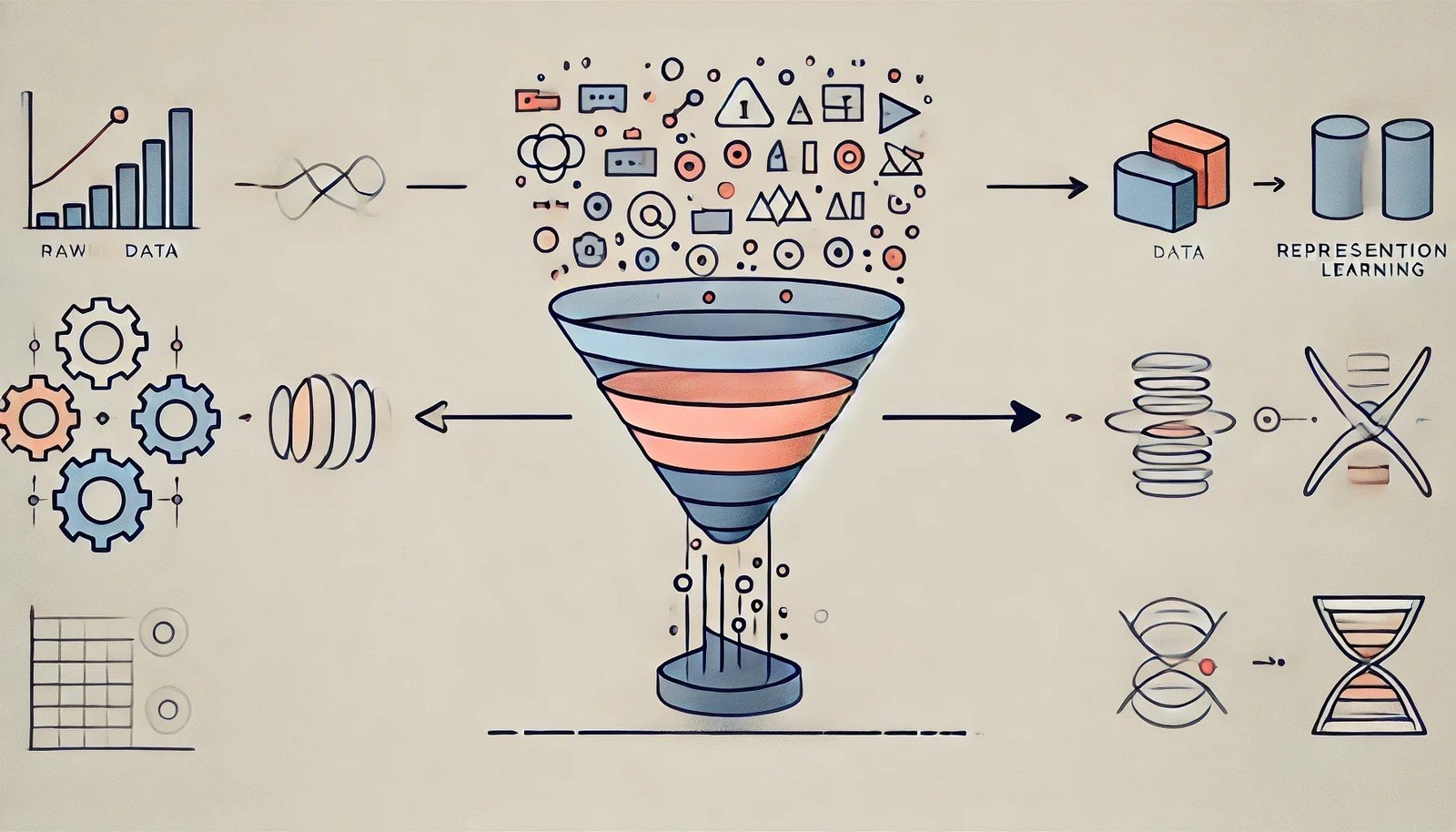Representation Learning

Quick Navigation:
- Representation Learning Definition
- Representation Learning Explained Easy
- Representation Learning Origin
- Representation Learning Etymology
- Representation Learning Usage Trends
- Representation Learning Usage
- Representation Learning Examples in Context
- Representation Learning FAQ
- Representation Learning Related Words
Representation Learning Definition
Representation Learning, in machine learning and AI, refers to the process where models discover meaningful representations or features from raw data. This approach allows AI systems to identify important patterns and characteristics in data without relying on extensive human-labeled data or hand-engineered features. Technically, representation learning leverages algorithms like neural networks, autoencoders, or transformers to extract, compress, and generalize data features, making it easier to perform downstream tasks, such as image classification, text translation, and more.
Representation Learning Explained Easy
Imagine you have a huge stack of pictures of animals, but you don’t know what each animal is. Representation learning is like a superpower that helps a computer look at all those pictures and figure out what makes each animal unique without being told. For example, it could learn that dogs have floppy ears or cats have pointy ones. By noticing these differences, it can then tell if a new picture shows a dog or a cat, even if it’s never seen that exact picture before.
Representation Learning Origin
Representation learning emerged from the need to make sense of unstructured data, such as images, audio, and text. It gained traction with the rise of deep learning methods that enabled computers to perform better in recognizing complex patterns in data. This shift marked a transition from traditional machine learning, where engineers manually created features, to automated feature learning through algorithms.
Representation Learning Etymology
The term “representation” comes from Latin "repraesentare," meaning "to show or exhibit." In this context, it signifies how data features are represented or structured for analysis.
Representation Learning Usage Trends
In recent years, representation learning has gained widespread adoption in fields like natural language processing (NLP), computer vision, and reinforcement learning. As more data becomes available, the use of representation learning techniques is expanding beyond traditional tech industries into areas like healthcare, finance, and even creative fields, where finding patterns in large datasets is essential.
Representation Learning Usage
- Formal/Technical Tagging: Data processing, unsupervised learning, feature extraction, deep learning, self-supervised learning
- Typical Collocations: "representation learning methods," "feature extraction," "deep neural networks," "latent space representations," "autoencoders," "transformer models"
Representation Learning Examples in Context
In computer vision, representation learning is used to recognize objects in images, even when lighting or angles vary.
NLP models use representation learning to understand the context of words, helping chatbots respond naturally.
Representation Learning FAQ
- What is representation learning?
Representation learning is a method in AI that helps machines discover important data patterns without direct human guidance. - How is representation learning used in NLP?
In NLP, it helps models understand the meaning of words and sentences to generate better translations and responses. - Why is representation learning important?
It enables more accurate predictions and insights by automating the feature extraction process from large datasets. - Is representation learning the same as feature extraction?
No, feature extraction is a part of representation learning but doesn’t capture the full complexity of representations. - How does representation learning relate to deep learning?
Many deep learning models, like neural networks, rely on representation learning for understanding complex data structures. - Can representation learning be unsupervised?
Yes, it often uses unsupervised learning techniques where data is unlabeled. - What are common methods in representation learning?
Common methods include autoencoders, convolutional neural networks (CNNs), and transformers. - How does representation learning help in image recognition?
It enables models to identify and generalize features, like shapes and colors, from raw image data. - What’s a practical example of representation learning?
Facial recognition software uses representation learning to identify individual faces from photos. - What are the challenges in representation learning?
Challenges include handling large datasets, ensuring fairness, and avoiding biases in learned representations.
Representation Learning Related Words
- Categories/Topics: Deep learning, machine learning, AI, computer vision, NLP, unsupervised learning
- Word Families: Represent, representation, representational, representatively
Did you know?
In 2012, representation learning led to a breakthrough in image recognition accuracy at the ImageNet Large Scale Visual Recognition Challenge, where models first achieved near-human accuracy. This was a landmark moment, proving the potential of AI to process and interpret visual data, and it spurred rapid advancements in deep learning applications worldwide.
PicDictionary.com is an online dictionary in pictures. If you have questions or suggestions, please reach out to us on WhatsApp or Twitter.Authors | Arjun Vishnu | @ArjunAndVishnu

I am Vishnu. I like AI, Linux, Single Board Computers, and Cloud Computing. I create the web & video content, and I also write for popular websites.
My younger brother, Arjun handles image & video editing. Together, we run a YouTube Channel that's focused on reviewing gadgets and explaining technology.



Comments powered by CComment